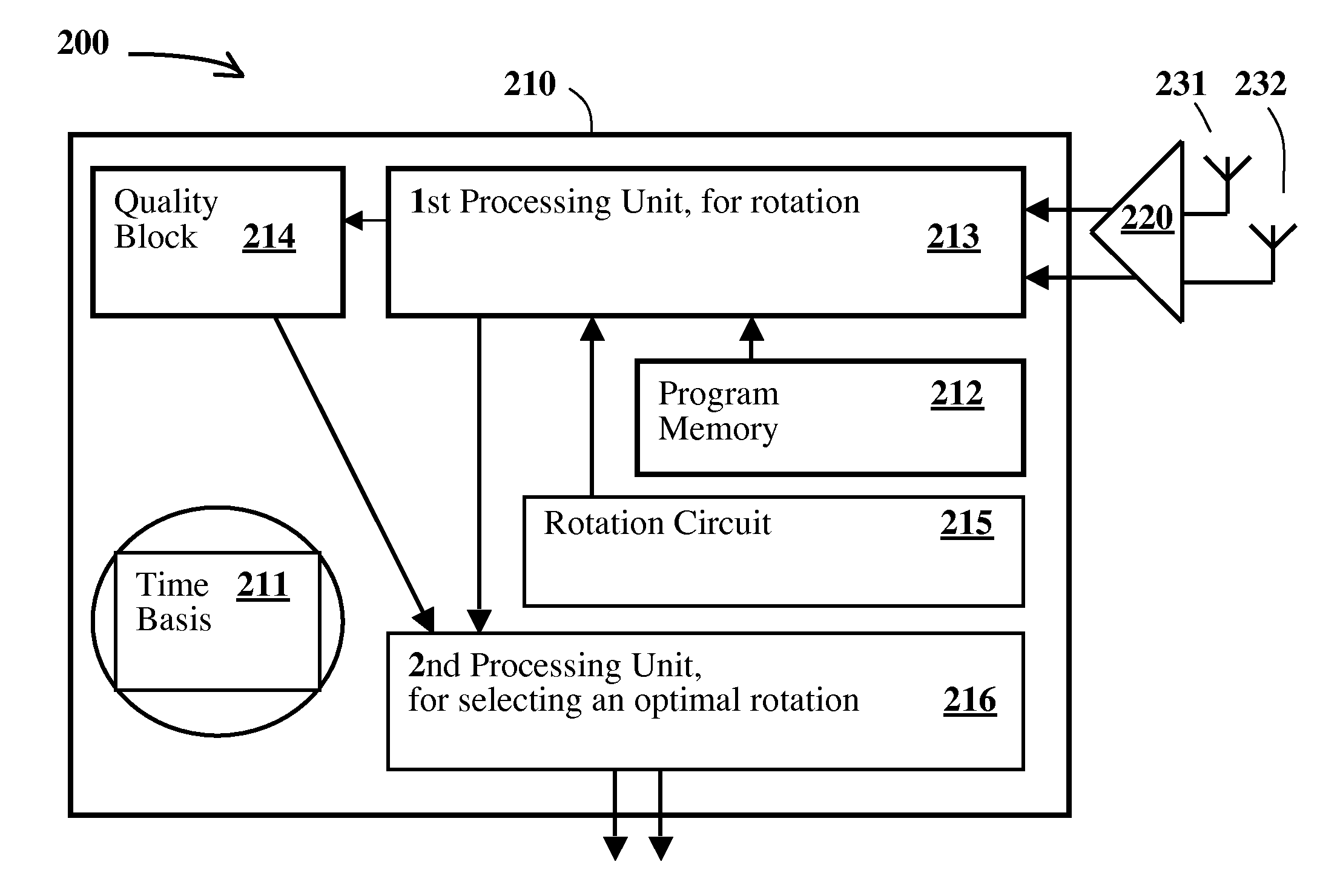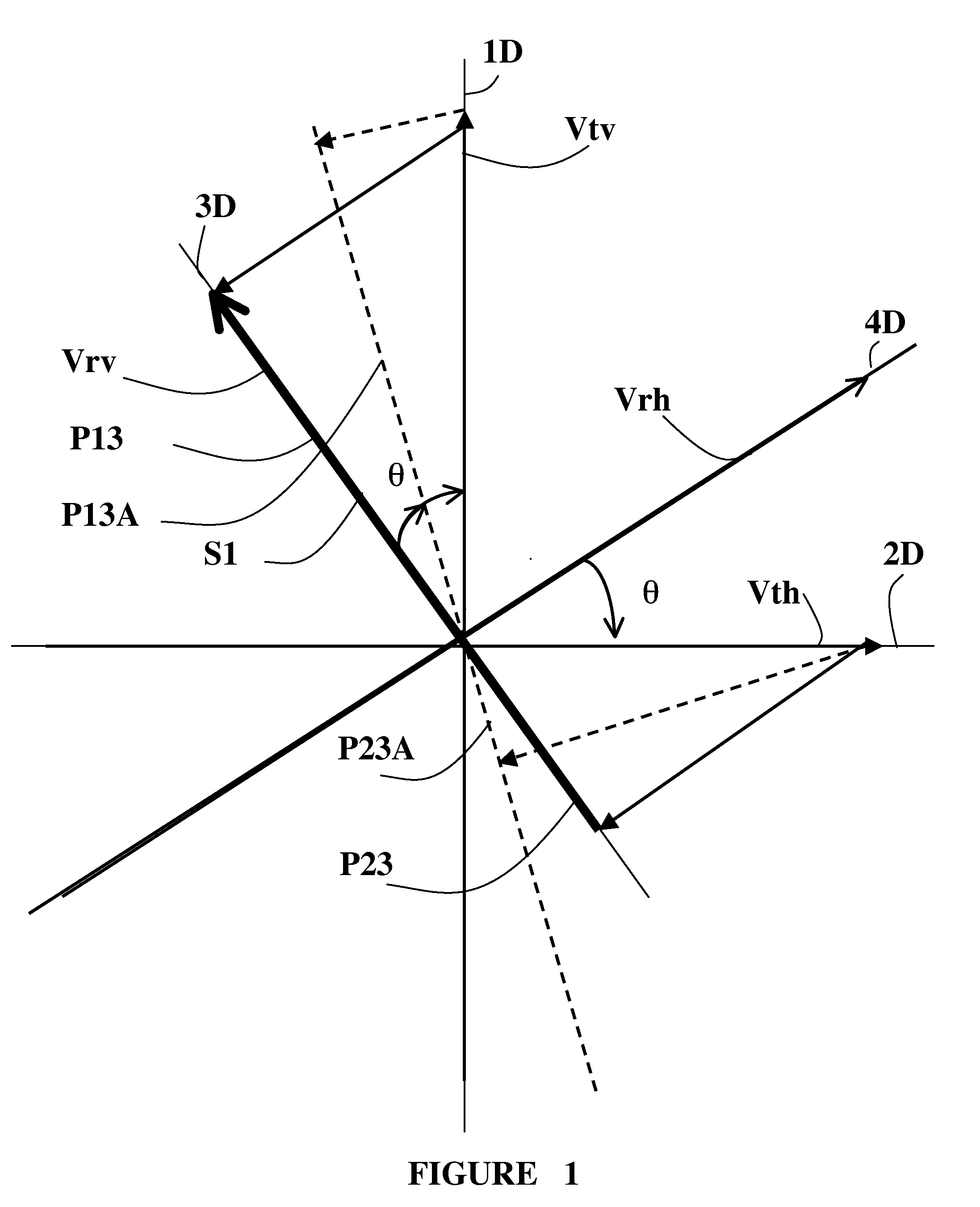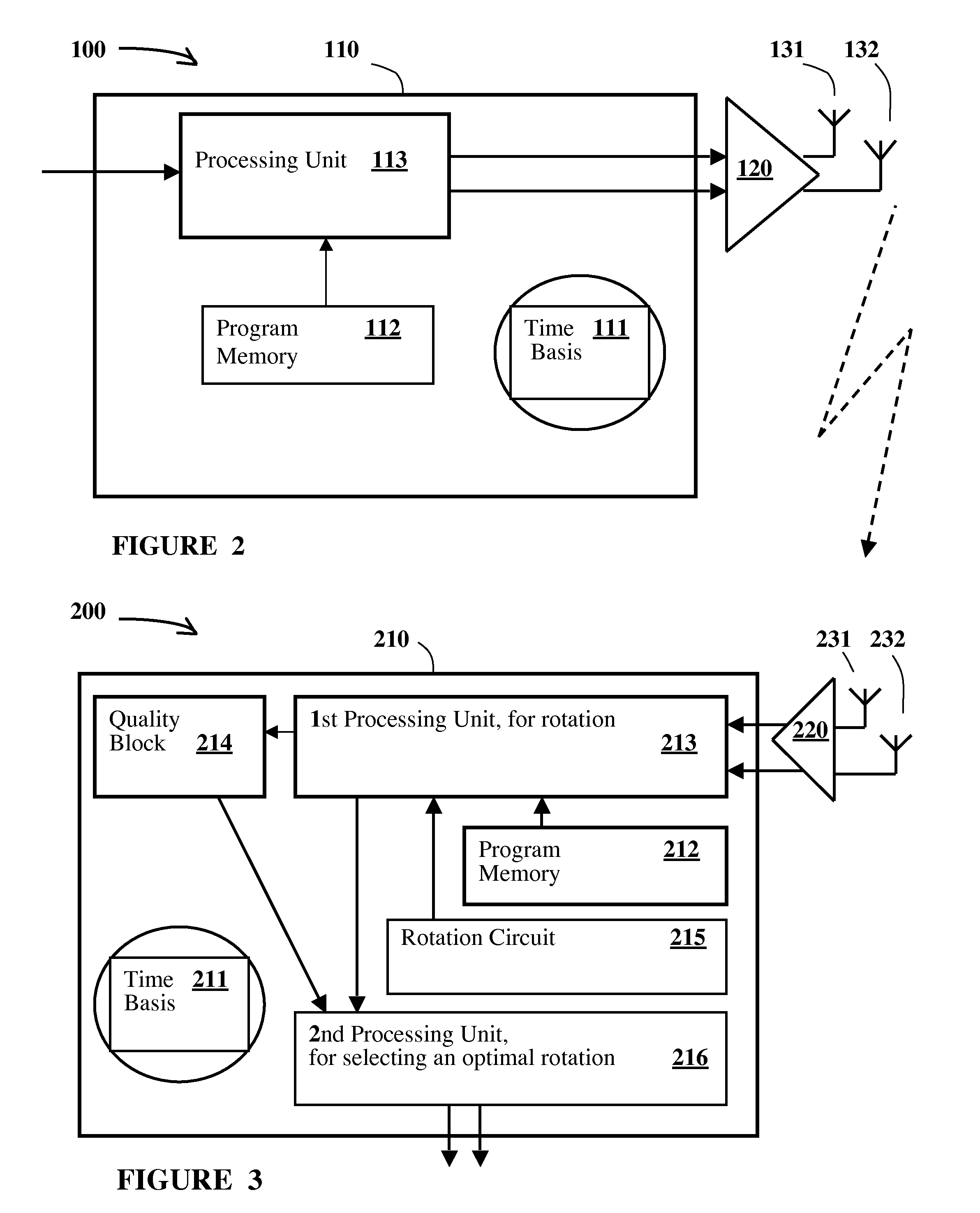Wireless Communications Method and System With Spatial Multiplexing Using Dually Polarized Antennas and Corresponding Receiver
a communication method and receiver technology, applied in the field of wireless communication, can solve the problems of increasing complexity, computation load, and complexity of the optimal decoder, and requiring the use of more costly technologies,
- Summary
- Abstract
- Description
- Claims
- Application Information
AI Technical Summary
Benefits of technology
Problems solved by technology
Method used
Image
Examples
Embodiment Construction
1. Mathematical Presentation of Receive Signals, Impacted by a Tilt, or Mismatch, between the Respective Orientations of the Transmit and Receive Antennas
[0063]In this example, a method according to an aspect of the disclosure is used for designing a MIMO system in which a first plurality (or set) of half (N) the number 2N of transmit antennas of a transmit device, or station, transmit their signals in a first polarization direction 1D and a second plurality (or set) of the other half number N of transmit antennas transmit in a second polarization direction 2D which is the related orthogonal polarization, where N may be any positive integer (N>1). Thus, the transmit signals belong to first and second sets of N transmit signals, respectively, which are considered as orthogonal vectors.
[0064]FIG. 1 illustrates a number 2N=2, for the sake of clarity, of vector signals, including a first transmit signal vector Vtv having the first polarization direction 1D, a vertical one, and a second ...
PUM
 Login to View More
Login to View More Abstract
Description
Claims
Application Information
 Login to View More
Login to View More - R&D
- Intellectual Property
- Life Sciences
- Materials
- Tech Scout
- Unparalleled Data Quality
- Higher Quality Content
- 60% Fewer Hallucinations
Browse by: Latest US Patents, China's latest patents, Technical Efficacy Thesaurus, Application Domain, Technology Topic, Popular Technical Reports.
© 2025 PatSnap. All rights reserved.Legal|Privacy policy|Modern Slavery Act Transparency Statement|Sitemap|About US| Contact US: help@patsnap.com



